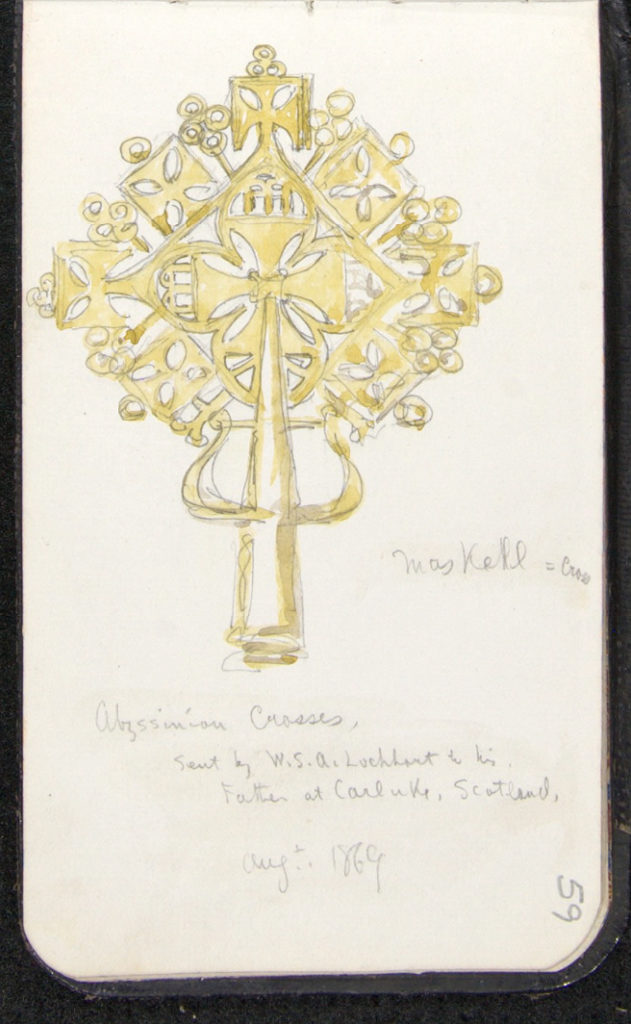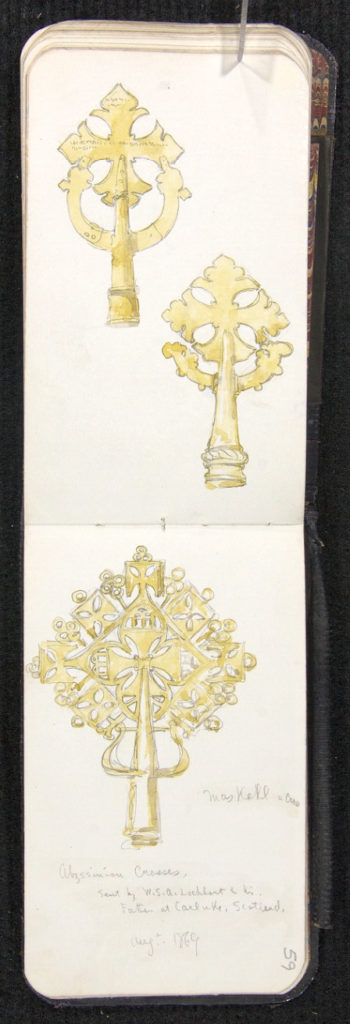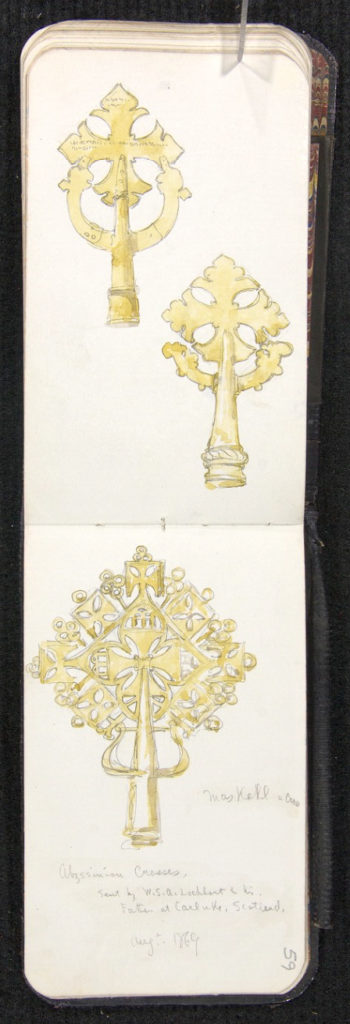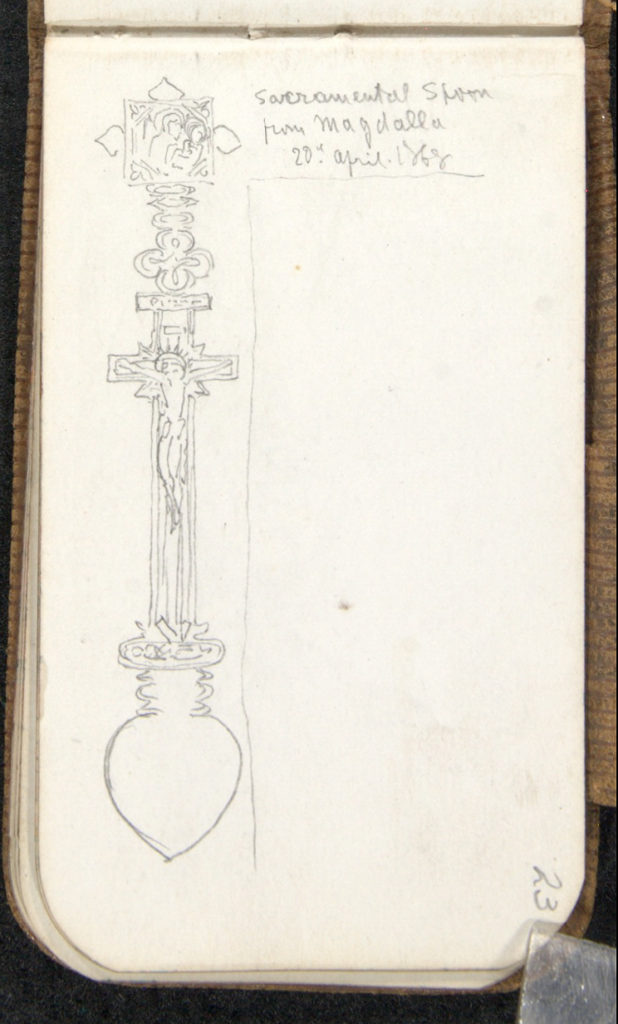What: A tabot, returned by St. John’s Episcopal Church, Edinburgh in 2002
Where: Ethiopia, checking exact location
One of at least 11 Tabots (consecrated altar slabs) seized at Maqdala by British soldiers. This one was taken by a Captain Arbuthnot of the 14th Hussars who may have been an Aide de Camp to General Napier, the leader of the expedition.
On return to Britain, recognising the religious significance of the artefact, he presented the Tabot to St. John’s Episcopal Church at the west end of Princes Street in Edinburgh.
More than 130 years later, it was discovered at the back of a cupboard by the church’s then associate rector The Rev John McLuckie.
McLuckie, who had worked in Addis Ababa in the past, recognised the Tabot. After consulting with people in his church, and finding about AFROMET – the Association for the Return of the Maqdala Ethiopian Treasure – through the internet, he decided to return the Tabot to Ethiopia.
A party from the Ethiopian Orthodox Church, along with hundreds of Afromet supporters, arrived in Edinburgh in January 2002. The Tabot was handed back amid huge celebrations during a service at St John’s. (See The Scotsman’s picture of the handover ceremony)
Archbishop Isaias of the Ethiopian Orthodox Church arrived in Addis Ababa with the Tabot in early February. Hundreds of thousands of Ethiopians came out into the streets to welcome it.
A Tabot is traditionally kept wrapped in cloths at the centre of an Ethiopian Orthodox church.
It focuses the presence of God in every Ethiopian church. Its removal is an act of sacrilege comparable to the removal of the Reserved Sacrament in an Anglican or Catholic church.
It is only ever seen by the priest and represents the Ark of the Covenant, which the Israelites used to carry the Ten Commandments as they travelled to the Promised Land. Ethiopian Christians believe they still possess the original Ark.
Read more about the Tabot’s discovery and its return to Addis Ababa.
Some clues about how it came to Edinburgh in the first place are found in this letter in the National Archives of Scotland in Edinburgh:
***
CH12/12/596
Letter from Dean Edward Bannerman Ramsay (Dean of Edinburgh) to Rev George Hay Forbes (Burntisland?)
23 Ainslie Place
Edinburgh
My Dear Mr Forbes,
The late King Theodore of Abyssinia had destroyed the Christian churches or some of them at Magdala – a number of relics of the internal furniture of these churches has been collected and laid up in the government stores. Captain Arbuthnot, who was with Lord Napier’s army when Magdala was taken brought some of these things home. He sent pieces to different clergymen and he sent a block of wood (which he understood had been used at the Comm table and that the xx [fulten, putten, pulten?] was put upon it) to me at St John’s. There is an inscription on it – the wood it is made of is said to be very ancient. Now dear Mr Forbes we much desiderate a translation into English of these Eastern letters. We naturally turn to you to help us. We know how skilled you are in Eastern literature and even if you did not know these Abyssinian letters we thought you could get them deciphered for us. I send therefore a little package, carriage paid, containing the inscription both in papers as copied or traced and also in plaster as a cast, I am yours sincerely and truly,
March 18, 1869




